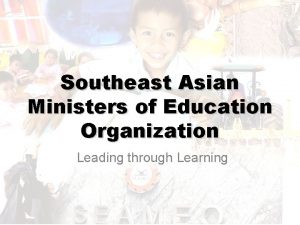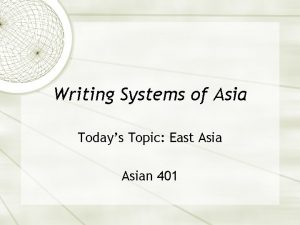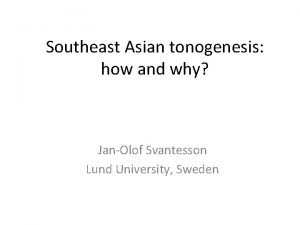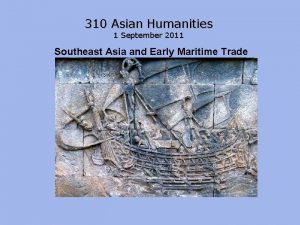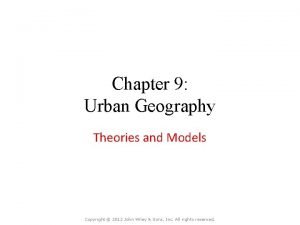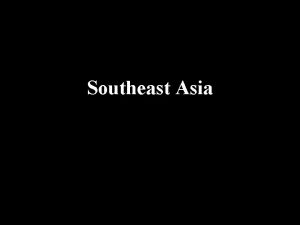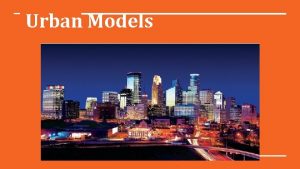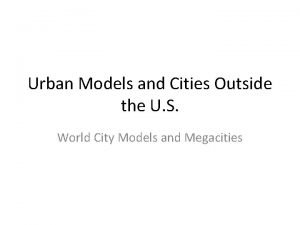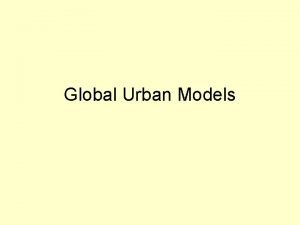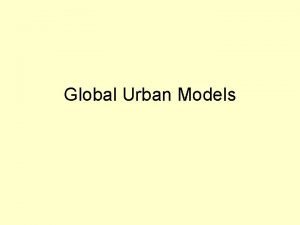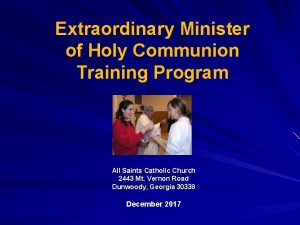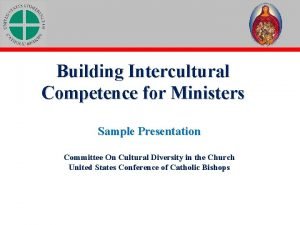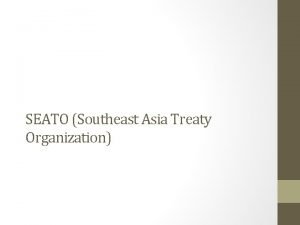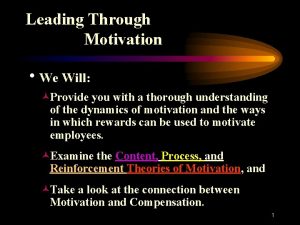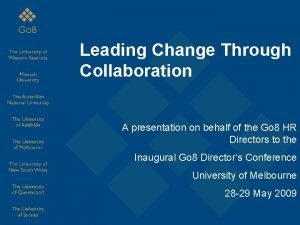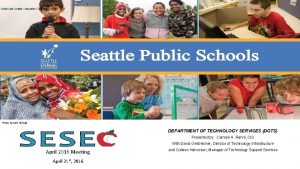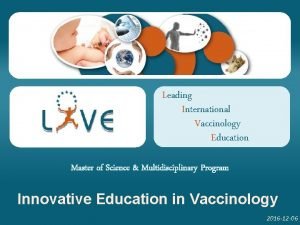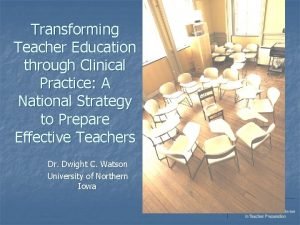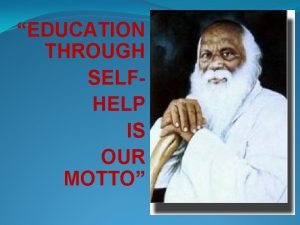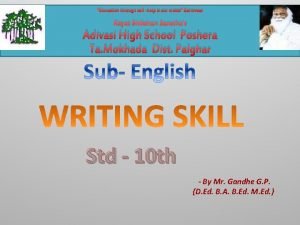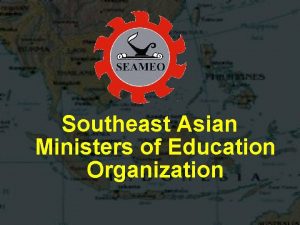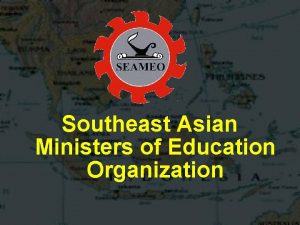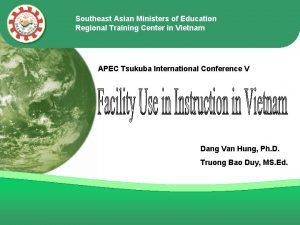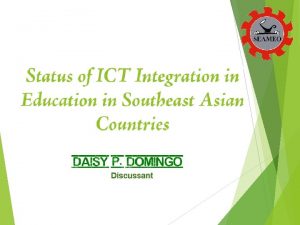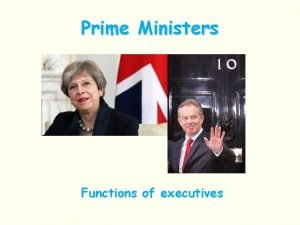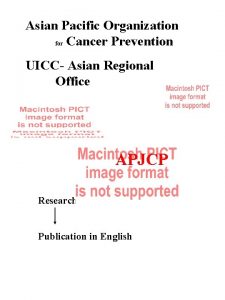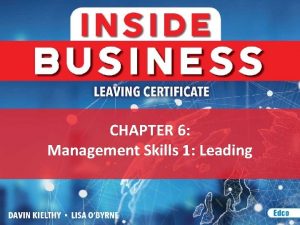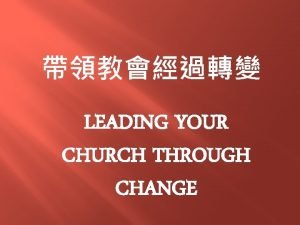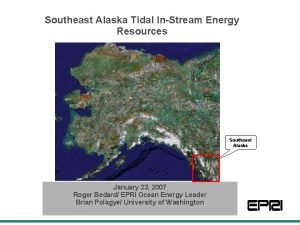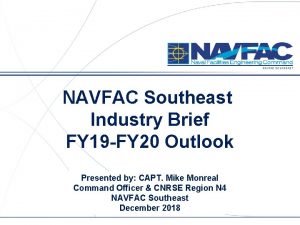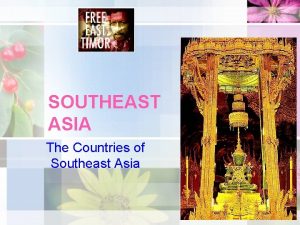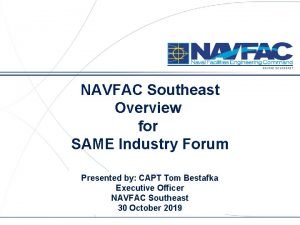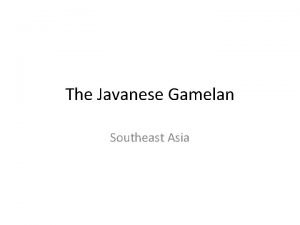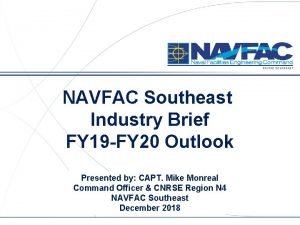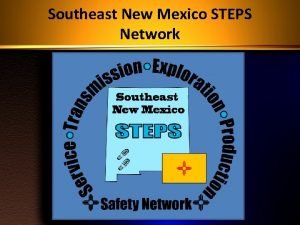Southeast Asian Ministers of Education Organization Leading through


























- Slides: 26

Southeast Asian Ministers of Education Organization Leading through Learning


Member Countries Indonesia (1965) Lao PDR (1965) Malaysia (1965) Philippines (1965) Singapore (1965) Thailand (1965) Cambodia (1971) Brunei Darussalam (1984) Vietnam (1992) Myanmar (1998) Timor-Leste (2006)

Associate Members Australia (1973) France (1973) New Zealand (1974) Canada (1988) Germany (1990) Netherlands (1993) Spain (2007) United Kingdom (2013)

Affiliate Members International Council for Open and Distance Education (1999) University of Tsukuba (2009) British Council (2010)

Vision The leading organization for enhancing regional understanding and cooperation in education, science and culture for a better quality of life in Southeast Asia Mission To enhance regional understanding, cooperation and unity of purpose among Member Countries for a better quality of life through – the establishment of networks and partnerships, – the provision of fora among policy makers and experts, and – the promotion of sustainable human resource development


Futures, Foresight and the Development of Education in Southeast Asia Dr Witaya Jeradechakul Director, SEAMEO Secretariat Bangkok, Thailand witaya@seameo. org secretariat@seameo. org

Imagine the Future https: //alumni. tsukuba. ac. jp/

The Futures 1. Not just the Future but Futures 2. Futurists can not predict the future. No one can. A prediction is intended to be true and accurate statement. But we all can forecast futures. A forecast is intended to be logical and useful statement about the futures. 3. Futures studies help institutions and individuals envision, design, and move towards preferred futures rather than passively accepting whatever “will be”. 4. But to be effective the process of forecasting and envisioning must be done continuously and not just a one-shot activity

The Futures and Time Horizon 1. But when is the present, when does the future begin? 2. Most people are only interested in “now”. 3. Some planners and policy-makers may be interested in the next five, ten, or maybe 15 years. 4. Futurists begin to take interest from between 20 to 50— maybe 100—years from now. 5. Beyond 100 years is speculation, imagination and fiction.

The Futures and Time Horizon DEGREE OF PARTICIPATION futures research planning administration MAGNITUDE OF INTENDED ACTIONS TIMELINE AND DEGREE OF FLUX James Dator, University of Hawaii

Plausible versus Preferred Futures Plausible Futures Preferred Futures What might happen: trends forecasts, scenarios Values, mission, vision, Goals, strategies, actions We need to understand this Dreams and imagination We need to create this

Impact and Uncertainty high impact Drivers high impact, low uncertainty Potential Drivers high impact, high uncertainty low uncertainty high uncertainty Background Trends Inconsequential low uncertainty, low impact high uncertainty, low impact

What is Foresight • Systematic attempts to look into the future (of science, society, economy – and their interactions) in order to promote social, environmental and economic benefit • Foresight study is a process of anticipating and managing changes

Key Elements of Foresight Study 1. 2. 3. 4. 5. 6. 7. Structured Anticipation Interactive and Participative Methods New networks Strategic Visioning For present day decision and action Social Benefits and Disbenefits

Why Foresight is Important 1. Globalization 2. Constraints on government spending 3. Change in management and industrial production 4. Changes in the structure of and demand for knowledge production 5. Increasing uncertainties for the future

Framework of Foresight Inputs Foresight process • • • Analysis Interpretation Prospection Outputs Strategy Strategic scanning of environment/ Delphi • Emerging issues/ trends analysis • Systematic thinking/ causal layout analysis • Scenarios visioning, backcasting, roadmaps Reports, presentations, workshops Multimedia Strategy development and strategic planning

Global picture of Education/ EFA/ MDGs including Issues & Trends Country Priorities, Issues and Challenges on Education + Regional Initiatives on EFA Goals and MDGs First Discussion + Analysis (Global versus Country Issues) Futures/Preferred/ Worst Case Scenario, etc Pre-2015 versus Post-2015 – What is missing and what are the new targets Consultations using Foresight and 4 Futures Gap Analysis Second Discussion + Analysis Gap analysis New set of education agenda Delphi Survey (2 rounds) §Selected target groups §Verify the agenda Presentation of Findings and the Post 2015 Agenda to SEAMEO Education Ministers and other Stakeholders Example used by SEAMEO in developing Post-2015 Education agenda

Range of Futures/ Foresight between “Push and Pull” PUSH Foresight about the future of technology aimed at technology. . and priority setting PULL Foresight about the future of technology aimed at identifying technology for economic and social change Foresight about social and economic needs and ways in which these might be solved with the help of Technology Foresight about social and economic needs aimed at identifying ways to alleviate social and economic conditions

SEAMEO Consultation and Development of Post 2015 Education Scenarios and Post-EFA Education Agenda in Southeast Asia

ity Development of Post-2015 Education Agenda in Southeast Asia es u un s l is Envir Economic growth onme n and s t deteriora ustain ti ability on to address the 4 futures 21 st Ce n guided by the 4 futures but other parameters such as the ASEAN Community, values and cultures 4 Generic Futures of Manoa School Achievements In Education Emerging Issues & Trends Challenges tury sk ills and m Tr obility a ing n r it on a e l na ifelong s L an Integ ration AS EA N Co mm rsity e v i lth ral d ge u a t l e u nd c lic h an a b l h u a i P c Post-2015 short Soc c i h (2015 -2020) & ap r Drivers og e long-term (2015 -2035) m of change De overnanc recommendations G ICT Next step: Determining preferred future

scenario building “live a nd let den l o G die” sc enario grouping the initiatives: unique, shared and common n ario cen s O E M A SE a str te s gie g led w no k SEAMEO Co gic n e t a str idatio l va key success factors a em nt 12 SEAMEO initiatives llege mentoring SEAMEO as s s e n i ”bus scenario l” usua me e g a Congres s Development of SEAMEO Strategic Plan (2011 -2020) Golden SEAMEO

Imagine there's no heaven It’s easy if you try No hell below us Above us only sky Imagine all the people living for today Imagine there's no countries It isn’t hard to do Nothing to kill or die for And no religion too Imagine all the people living life in peace You, you may say I’m a dreamer, but I'm not the only one I hope some day you'll join us And the world will be as one

Imagine no possessions I wonder if you can No need for greed or hunger A brotherhood of man Imagine all the people sharing all the world You, you may say I'm a dreamer, but I'm not the only one I hope some day you'll join us And the world will live as one http: //www. bretlsimmons. com/2011 -07/leadership-foresight/

Thank you very much. Futures, Foresight and the Development of Education in Southeast Asia Dr Witaya Jeradechakul Director, SEAMEO Secretariat Bangkok, Thailand witaya@seameo. org secretariat@seameo. org
 Southeast asian ministers of education
Southeast asian ministers of education Writing systems of asia
Writing systems of asia Tonogenesis
Tonogenesis Southeast asian alphabets
Southeast asian alphabets Blockbusting definition ap human geography
Blockbusting definition ap human geography Southeast asian architecture
Southeast asian architecture Urban realms model
Urban realms model Southeast asian urban model
Southeast asian urban model Southeast asian urban model
Southeast asian urban model Southeast asian urban model
Southeast asian urban model Extraordinary ministers of holy communion training
Extraordinary ministers of holy communion training Building intercultural competence for ministers
Building intercultural competence for ministers Bobbin leading principle
Bobbin leading principle Seato dissolved
Seato dissolved Leading through motivation
Leading through motivation Leading through change presentation
Leading through change presentation Southeast seattle education coalition
Southeast seattle education coalition Leading international vaccinology education
Leading international vaccinology education Process organization in computer organization
Process organization in computer organization Block arrangement compare and contrast
Block arrangement compare and contrast Sin entered through one man
Sin entered through one man Furcation dental definition
Furcation dental definition Conversation of timber
Conversation of timber Night of the scorpion talks about
Night of the scorpion talks about Transforming teacher education through clinical practice
Transforming teacher education through clinical practice Rayat shikshan sanstha motto
Rayat shikshan sanstha motto Education through self help is our motto
Education through self help is our motto
